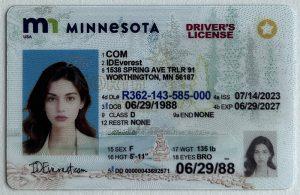In an era where digital devices are integral to daily life, parental control features have emerged as essential tools for safeguarding children in the virtual world. These features promise to shield young users from inappropriate content, monitor online activity, and set usage limits, providing parents with peace of mind. However, as reliance on these digital safeguards grows, an important question arises: Do these tools genuinely ensure children’s online safety, or do they offer parents a false sense of security? This article delves into the effectiveness of parental control features, examining their capabilities and limitations, and explores whether they truly fulfill their protective role or inadvertently lull parents into complacency.
Evaluating the Effectiveness of Parental Control Tools
In assessing the utility of parental control tools, it’s crucial to consider their multifaceted impact. These tools can undoubtedly offer a layer of protection by filtering inappropriate content, monitoring online activities, and setting time limits. However, the effectiveness of these measures often hinges on several factors:
- Age Appropriateness: The suitability of controls varies with a child’s age and maturity. What works for a younger child may not be effective for a teenager.
- Technological Savvy: Many children today are tech-savvy enough to bypass restrictions, rendering some tools ineffective.
- Communication: Tools cannot replace open dialogue between parents and children about online safety and digital literacy.
- Customization and Flexibility: The ability to tailor controls to fit individual needs is essential for maintaining relevance as children grow.
While these tools can provide a helpful starting point, relying solely on them may not address the dynamic nature of digital interactions. Parents should consider these factors to avoid overestimating the protection these tools offer.

Understanding the Limitations and Risks Involved
While parental control features offer a layer of protection, they are not foolproof. These tools can often be bypassed by tech-savvy children who find ways around restrictions. It’s important for parents to recognize that relying solely on these features may not address all online safety concerns. Additionally, parental controls can sometimes block legitimate content, creating frustration and potentially encouraging children to seek alternative, less secure methods of accessing information.
Consider the following limitations:
– Over-reliance on technology: Parents might become complacent, assuming these tools are safeguarding their children at all times.
– Inaccurate filtering: Some content may be incorrectly flagged or overlooked, leading to exposure to inappropriate material.
– Privacy concerns: Using extensive monitoring features can inadvertently infringe on a child’s privacy, potentially leading to trust issues.
It’s crucial for parents to engage in open conversations with their children about internet safety, complementing technological measures with education and awareness. By doing so, they can better prepare their children to navigate the digital world responsibly.

Balancing Technology with Active Parental Engagement
While parental control features offer a layer of protection in the digital landscape, they should not be the sole reliance for ensuring children’s online safety. Active parental engagement plays a crucial role in complementing these technological tools. Engaging with children about their digital experiences fosters a sense of trust and openness, encouraging them to share any concerns or encounters they may face online. This interaction helps parents stay informed about their child’s digital world, beyond what control settings can monitor.
To effectively balance technology with active involvement, consider the following approaches:
- Open Dialogue: Regular conversations about online activities help demystify the digital world and create a safe space for children to express themselves.
- Shared Activities: Participate in online games or social media platforms together, which can provide insights into your child’s interests and online behavior.
- Education and Awareness: Equip both yourself and your child with knowledge about online risks and safe practices, fostering a collaborative approach to digital safety.
By integrating these practices, parents can move beyond a false sense of security, ensuring a more comprehensive approach to their child’s online well-being.

Recommendations for Enhancing Digital Safety Measures
- Regularly Update Software: Ensuring that all devices and applications are updated is crucial. Software updates often include patches for security vulnerabilities that could be exploited by malicious entities.
- Educate About Online Risks: While parental control features can filter content, they are not foolproof. Engage in open discussions with children about the potential dangers online, such as phishing scams and privacy concerns.
- Implement Strong Password Practices: Encourage the use of complex passwords and consider utilizing password managers. Regularly changing passwords adds an extra layer of security.
- Utilize Multi-Factor Authentication (MFA): MFA provides an additional security layer beyond just passwords, making unauthorized access significantly more difficult.
- Monitor Online Activity: While respecting privacy, keeping an eye on online activities can help identify any red flags or inappropriate behavior early on.
Incorporating these measures can offer a more comprehensive approach to digital safety. It’s essential for parents to understand that while tools like parental controls are beneficial, they should be part of a broader strategy that includes education and vigilance. By staying informed and proactive, parents can foster a safer online environment for their children.



